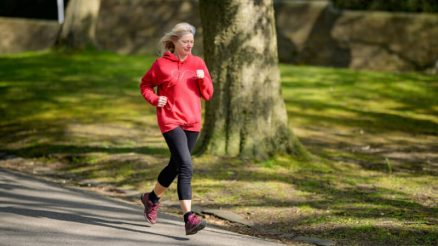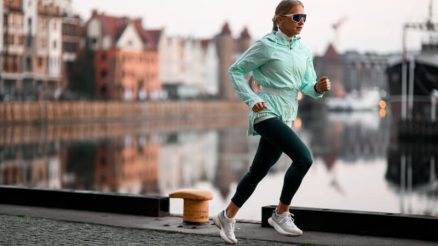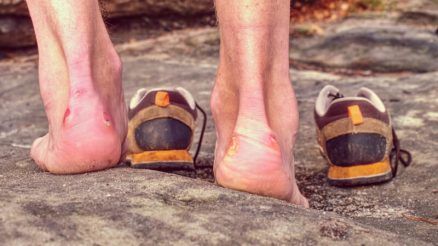For centuries, humans ran barefoot. It’s how our ancestors navigated the world, hunted, and thrived. Yet, in modern times, the cushioned, supportive running shoe has become the norm. However, a growing movement advocates for a return to our roots, embracing barefoot running or the use of minimalist shoes. But is this trend a revolutionary path to injury-free running, or a risky venture? Let’s dive into the pros and cons.
What Exactly is “Minimalist” Running?
Before we explore the benefits and drawbacks, it’s important to define our terms.
- Barefoot Running: As the name suggests, this involves running with no footwear at all.
- Minimalist Shoes: These are shoes designed to mimic the barefoot experience. They typically feature:
- Zero Drop: No height difference between the heel and forefoot.
- Thin Sole: Minimal cushioning, allowing for greater ground feel.
- Wide Toe Box: Allowing toes to splay naturally.
- Lightweight and Flexible: Enabling unrestricted foot movement.
The core idea behind both is to encourage a more natural running gait, often characterized by a forefoot or midfoot strike, rather than the traditional heel strike common in heavily cushioned shoes.
The Pros: Why Go Barefoot or Minimalist?
Proponents of minimalist running highlight several potential advantages:
- Improved Running Form:
- Natural Foot Strike: Without cushioning, landing on the heel becomes jarring and uncomfortable. This naturally encourages a shift to a forefoot or midfoot strike, which is often considered more efficient and less impactful on the knees and hips.
- Enhanced Proprioception: The increased ground feel allows your feet to send more sensory information to your brain, improving your awareness of your body’s position and movement. This can lead to better balance and agility.
- Stronger Feet and Ankles:
- Muscle Development: Traditional shoes can weaken the intrinsic muscles of the foot by providing external support. Barefoot/minimalist running forces these muscles, along with the tendons and ligaments in the feet and ankles, to work harder, leading to increased strength and resilience.
- Arch Support: Stronger foot muscles can lead to a more naturally robust arch, potentially reducing issues like flat feet.
- Reduced Impact Forces:
- While counter-intuitive to some, studies suggest that a forefoot strike (common in minimalist running) can distribute impact forces more widely across the foot, potentially reducing the peak forces experienced by joints like the knee and hip compared to a heavy heel strike.
- Greater Connection to the Environment:
- For many, there’s an inherent joy and freedom in feeling the ground beneath their feet. It can be a more mindful and grounding experience.
The Cons: The Potential Pitfalls
Despite the touted benefits, switching to barefoot or minimalist running isn’t without its risks, especially if not approached correctly:
- Increased Risk of Injury (Especially Initially):
- Overuse Injuries: The most common issue is doing too much, too soon. Your feet, ankles, and lower legs are not accustomed to the new demands, leading to stress fractures, Achilles tendinitis, plantar fasciitis, and calf strains.
- Puncture Wounds/Abrasions: Barefoot running exposes your feet to sharp objects, glass, and rough surfaces, increasing the risk of cuts and punctures.
- Blisters: Without the protection of socks and shoes, blisters can be a significant problem, particularly during the transition phase.
- Requires a Gradual Transition:
- You can’t just ditch your cushioned shoes and run a marathon barefoot. The transition requires significant time (months, even years for some) and patience, gradually increasing mileage and adapting your form. This can be frustrating for eager runners.
- Surface Limitations:
- Barefoot running is best suited for smooth, soft surfaces like grass, trails, or specialized tracks. Running on concrete or asphalt can be very harsh on unprotected feet and may not be sustainable for long distances. Minimalist shoes offer some protection but still require careful surface selection.
- Not for Everyone:
- Individuals with certain pre-existing foot conditions, biomechanical issues, or a history of specific injuries may find barefoot or minimalist running unsuitable or even detrimental. Consulting a podiatrist or physical therapist is highly recommended before making the switch.
Conclusion: Is it Right for You?
The decision to run barefoot or in minimalist shoes is a personal one, with a clear trade-off between potential benefits and risks. For those willing to commit to a slow, careful transition, and who are attentive to their body’s signals, it can lead to stronger feet, improved form, and a more natural running experience.
However, it’s crucial to approach this change with caution, patience, and realistic expectations. Listen to your body, prioritize proper form over mileage, and don’t hesitate to seek professional advice. Ultimately, the “best” way to run is the one that keeps you healthy, happy, and injury-free.








